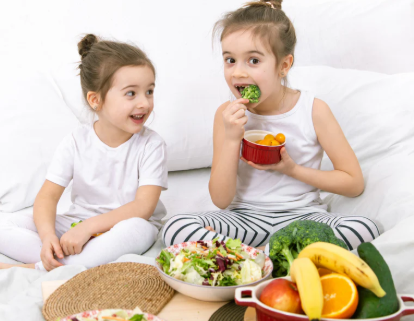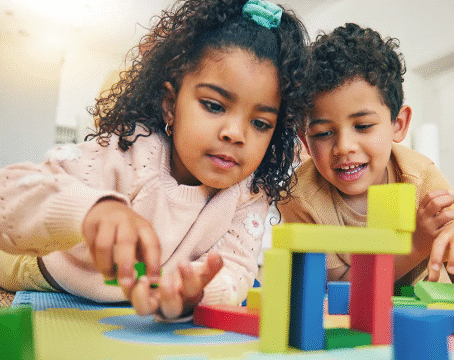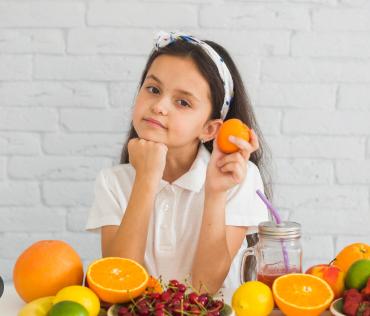Packing a lunchbox may seem like a small part of the day, but it can actually have a big impact on how children view food, energy, and healthy living. The meals and snacks we give children during school hours not only fuel their bodies but also shape their habits and attitudes toward eating. Teaching kids about healthy lunchbox ideas can be an enjoyable and meaningful process when done with care and positivity. Instead of thinking of it as a chore, it can become an opportunity to connect with children and guide them toward choices that help them grow strong, stay focused, and enjoy the food they eat.
Children are naturally curious, and this curiosity can be a great tool when it comes to food. Many parents find success when they involve their kids in the planning and preparation of their lunchbox. Asking simple questions like what fruits they would like to try, or which colorful vegetables look appealing, gives children a sense of control and excitement about their meals. The more invested they feel, the more likely they are to enjoy eating what has been packed. Even younger children can join in by helping to wash fruit, spread nut-free alternatives, or choose a fun container for their snacks.
A balanced lunchbox goes beyond just providing something to eat. It is about offering a mix of foods that help children stay alert and energized throughout their school day. Parents can think of the lunchbox as a small window of opportunity to teach variety. Including whole grains for steady energy, fruits and vegetables for vitamins, and proteins for growth helps children understand how different foods support their bodies in different ways. When explained in simple terms, children begin to see food not only as tasty but also as helpful to their learning and play.
Presentation also plays a big role. Children are often more willing to eat food that looks fun and inviting. Bright colors from natural fruits and vegetables can make a lunchbox appealing without needing extra packaging or processed snacks. Cutting sandwiches into shapes, arranging fruit slices in patterns, or adding small containers with dips for vegetables can turn ordinary items into exciting choices. It teaches children that eating well does not have to be boring, and that food can be both nourishing and enjoyable.
It is also important to consider the balance between variety and familiarity. While introducing new foods is valuable, having one or two familiar favorites provides comfort and encourages children to try new things without feeling pressured. For instance, a child who loves apple slices may feel more open to trying cucumber sticks if both appear side by side in the lunchbox. This gentle approach allows children to explore without creating mealtime battles.
One of the best ways to teach healthy lunchbox habits is by being a role model. Children notice what adults eat and often mimic those behaviors. When they see a parent or caregiver enjoying a fresh salad, whole grain wrap, or a piece of fruit, it reinforces the message that these foods are not only for children but are good choices for everyone. Sharing stories about why certain foods are favorites can also spark interest. Saying something like, “I love these berries because they give me energy in the afternoon” makes the connection between food and feelings clear in a friendly way.
Conversations around food should always remain light and positive. Instead of focusing on what not to eat, parents can highlight the benefits of healthier choices. For example, saying “Carrots help you see better in the dark” or “These crackers give you energy to play at recess” feels more encouraging than telling a child what to avoid. When children associate food with fun, energy, and growth, they are more likely to develop lasting healthy habits.
Teaching kids about healthy lunchbox ideas can also include lessons about responsibility and planning. Older children may enjoy helping to write a list of items they want for the week or choosing a new recipe to try at home. Involving them in shopping and preparation teaches valuable life skills, such as organization, independence, and the importance of balance. Over time, these small steps contribute to confidence in making their own choices, even when they are outside the home.
Another gentle but powerful way to teach children about food is through stories and creativity. Parents can encourage imagination by connecting lunchbox items to adventures. A wrap could be described as a “superhero roll-up” or a container of grapes could be called “energy gems.” This playful language adds fun while reinforcing that the food is helping them in some way. Children are more likely to remember these connections and look forward to eating foods associated with exciting ideas.
It is also worth remembering that balance includes flexibility. Not every lunchbox needs to be perfect, and occasional treats can fit into a healthy lifestyle without guilt. Teaching children that treats are a part of life but do not have to be the main part of every meal helps them learn moderation naturally. When children know that enjoying a sweet snack once in a while is normal, they are less likely to crave it constantly. This relaxed approach avoids pressure and keeps food choices positive.
Schools can also play a supportive role in reinforcing healthy lunchbox habits. When parents and teachers work together, children receive consistent messages about making thoughtful choices. For example, classroom discussions about food groups, gardening projects, or cooking activities can connect directly to what children see in their own lunchboxes. This creates a sense of community and reinforces the idea that healthy eating is part of everyday life, not just something parents encourage at home.
As children grow, their preferences and needs will change, and so will their lunchboxes. What remains important is the foundation of open communication, encouragement, and exploration. Parents who guide their children with patience and positivity help them build a lifelong relationship with food that is balanced, joyful, and free of unnecessary stress.
In the end, teaching kids about healthy lunchbox ideas is not about perfection. It is about creating opportunities for learning, connection, and discovery. When children are encouraged to participate, given choices, and shown that healthy foods can be colorful and fun, they become more confident and open to trying new things. The lunchbox becomes more than just a container of food; it becomes a symbol of care, creativity, and support. Through these small daily practices, children can develop a lasting appreciation for foods that nurture their bodies and minds, setting the stage for habits that will benefit them well into adulthood.






